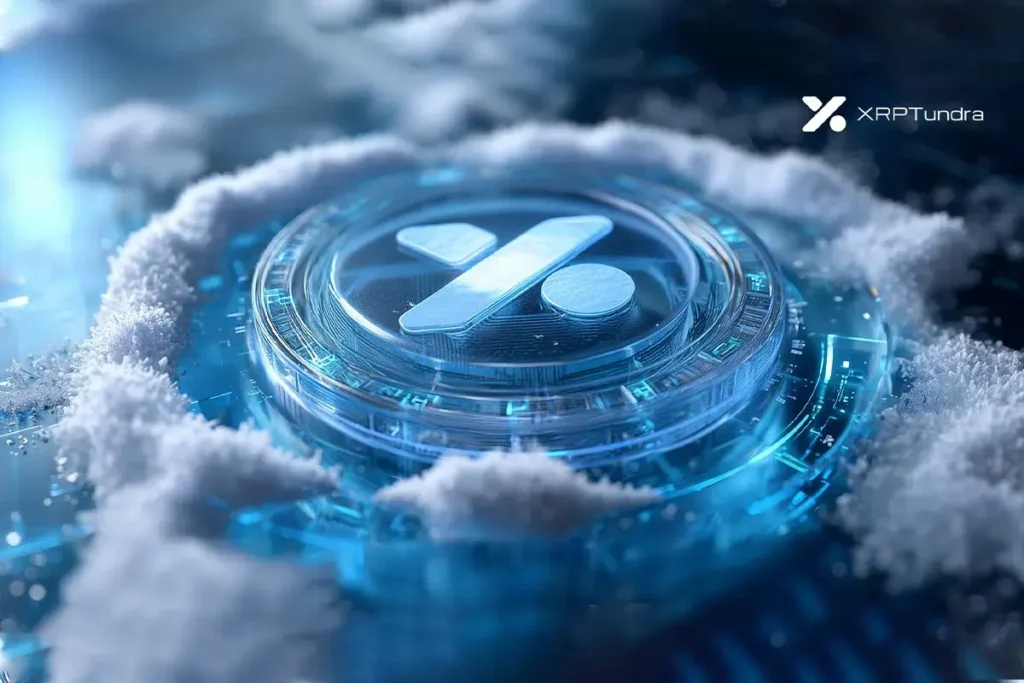The Future of Governance in Crypto: How XRP Tundra Paves the Way
In the evolving landscape of cryptocurrency, governance has become a pivotal factor that distinguishes emerging ecosystems. The shift from loosely structured Decentralized Autonomous Organizations (DAOs) to more accountable frameworks has become necessary amid regulatory scrutiny and the failures of unregulated models. The XRP Tundra ecosystem emerges as a robust answer to these challenges, marrying the transparency of the XRP Ledger with a dedicated Layer-2 execution network called GlacierChain. By embedding governance directly into the code, XRP Tundra offers a model that transcends the usual slogans and makes decision-making a measurable reality.
A Dual-Chain DeFi Ecosystem
XRP Tundra is crafted as a dual-chain decentralized finance (DeFi) ecosystem. It employs two specific tokens: TUNDRA-S and TUNDRA-X. TUNDRA-S operates on the Solana blockchain, focusing on yield operations, while TUNDRA-X is anchored in the XRP Ledger, serving governance and reserves. This distinct division of responsibility makes control, liquidity, and compliance visible, providing investors with the assurance that the governance model is resistant to manipulation.
Control Built into the Ledger
The governance token TUNDRA-X is designed to ensure that every voting action is transparently measurable and directly linked to wallet addresses on the XRPL. Every outcome of a governance decision is recorded as an XRPL transaction, eliminating the obscurity often associated with DAO governance. Rather than merely relying on symbolic votes, the Tundra model integrates policy changes directly into executable scripts that alter ecosystem parameters automatically. This design replaces the uncertainty and potential for mismanagement typically associated with centralized systems, ensuring that decisions are permanently recorded on the ledger.
A Deliberate Governance Cycle
Execution in the XRP Tundra ecosystem takes place through GlacierChain, its Layer-2 extension for XRPL. This acts as a bridge that ensures approved governance changes are propagated without the need for manual coordination. If a voting proposal modifies staking yields or liquidity curves, GlacierChain translates these commands into formats compatible with Solana, solidifying intentional tracking from decision-making to execution. The result is a governance framework that values precision over speed, eliminating ambiguity and promoting procedural certainty.
Verification and Accountability
In a regulatory landscape that increasingly demands transparency, validation is at the core of the XRP Tundra ecosystem. Independent audits performed by organizations like Cyberscope, Solidproof, and FreshCoins validate the integrity of the core contracts on both Solana and XRPL. Vital Block’s KYC certification ensures verified ownership and operational oversight. This framework not only transforms an informal DAO structure into a compliant governance entity, but it also offers participants clear visibility into decision-making processes and responsibility for outcomes, creating an economic advantage for tokens operating under stringent compliance frameworks.
Participation and Governance Access
Access to governance within the XRP Tundra ecosystem begins at the presale phase, currently in its sixth stage. TUNDRA-S is offered at $0.1, while TUNDRA-X is priced at $0.05, with anticipated listings of $2.5 and $1.25, respectively. As of now, over 11,600 participants have collectively contributed more than $1.2 million, establishing both liquidity and governance access. Each presale allocation grants immediate voting weight to TUNDRA-X holders, reinforcing the principle that influence should correspond to contribution. The structure ensures that every confirmed proposal triggers executable outcomes on-chain.
A Governance Model Designed for Longevity
XRP Tundra’s governance framework is characterized by its deliberate pace. While other ecosystems often reward quick reactions, Tundra chooses the path of permanence. Every governance update follows a verifiable process across the XRPL and Solana where identities behind contracts are fully documented. The model treats decentralization as an engineering endeavor rather than just a marketing term, valuing audit trails and consistency over velocity. Consequently, authority within the ecosystem is not merely negotiated; it is encoded and preserved for lasting stability in a volatile market.
In conclusion, XRP Tundra exemplifies a new era in cryptocurrency governance by focusing on verifiable accountability, transparency, and operational integrity. With its dual-chain architecture, automated governance processes, and rigorous verification, Tundra is well-positioned to adapt to the challenges of the evolving crypto landscape, offering a stable and trustworthy platform for participation and investment.


